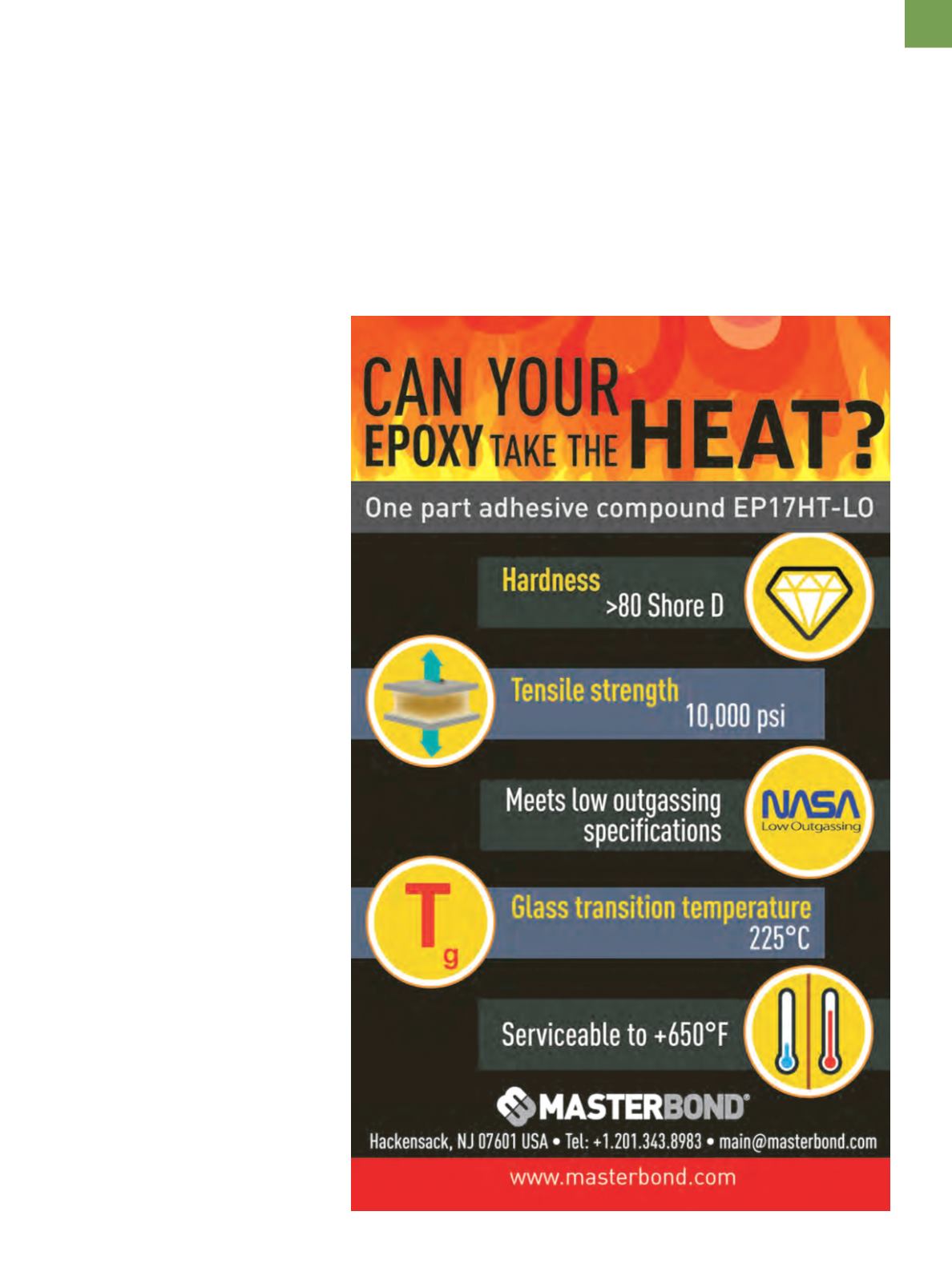

Experimentaldata
If spring steels (typically ~0.6%
carbon) are heat treated in gas-fired
furnaces, operating conditions can
either increase or decrease the as-
rolled depth of decarburization after
heat treatment, relative to the starting
point. Austenitizing of these grades is
typically performed in the 1600°-1650°F
range and holding times, which depend
upon bar diameter, are usually at least
20 minutes. In many cases, a protective
atmosphere is not employed.
An experiment was conducted us-
ing round bars of 5160 modified spring
steel. Specimens were austenitized ei-
ther with the as-rolled mill scale present
or removed by sand blasting. Specimens
were austenitized at 1600°F (871°C) for 80
minutes, then oil quenched. Part of each
bar was incrementally machined (after
scale removal by glass-bead blasting)
and the carbon content was determined.
Surface hardness readings were also
recorded and results are shown in Fig. 3.
Note that the specimen austenitized at
1600°F exhibits a large difference be-
tween surface carbon content and sur-
face hardness, compared to the bar cov-
ered with mill scale to the descaled one.
Figure 4 shows results of quantita-
tive FFD and MAD measurements for the
two specimens austenitized at 1600°F—
including 132 measurements around the
periphery of the scaled bar and 113 mea-
surements for the descaled sample. The
scaled bar austenitized at 1600°F exhibits
a consistent free-ferrite layer around its
periphery with an average depth of 0.08
± 0.002 mm (95% confidence interval).
Note that FFD measurement distribution
is very narrow, or
peaked
. The MAD, how-
ever, shows an average depth of 0.266 ±
0.006 mm and distribution is broad. In
contrast, for the descaled bar, no free
ferrite was seen and 19.47% of the 113
measurements indicate no decarburiza-
tion was present. The remaining mea-
surements exhibit an average depth of
0.073 ± 0.010 mm, slightly lower than the
scaled bar’s average FFD. The MAD dis-
tribution curve appears to be bimodal.
Figure 5 shows typical microstructures
observed at the specimens’ two surfaces.
Visual estimates of themaximumaf-
fected depth of decarburization general-
ly produce more conservative estimates
than the incremental carbon analysis
procedure or microindentation hard-
ness traverses. This is because it is diffi-
cult to detect the final minor loss in car-
bon as the unaffected core is reached.
Color etchants are likely to perform bet-
ter for this purpose than black and white
etchants such as nital or picral, but com-
parative tests have not been performed.
For annealed microstructures, the visual
estimate of the average MAD is generally
about 50-70% of the MAD determined by
incremental carbon analysis or microin-
dentation tests. This depth, however,
can be considered an effective depth
where carbon content is usually with-
in about 10-25% of the matrix carbon
content and responds reasonably well
to heat treatment. If the maximum ob-
served MAD is used as criteria for stock
removal, the surface’s carbon content
will be close to the matrix carbon con-
tent after machining.
A D V A N C E D
M A T E R I A L S
&
P R O C E S S E S | F E B R U A R Y
2 0 1 5
2 5


















